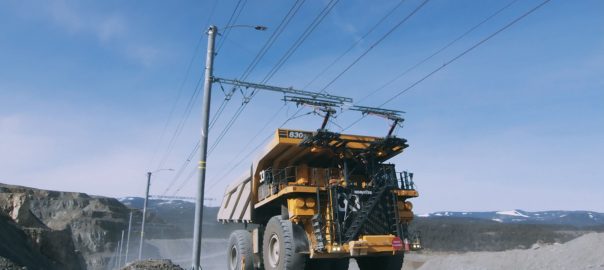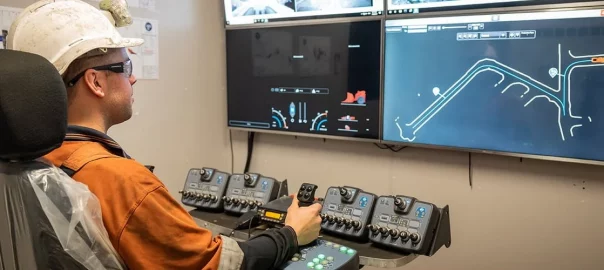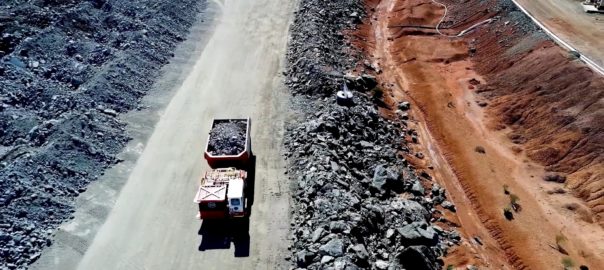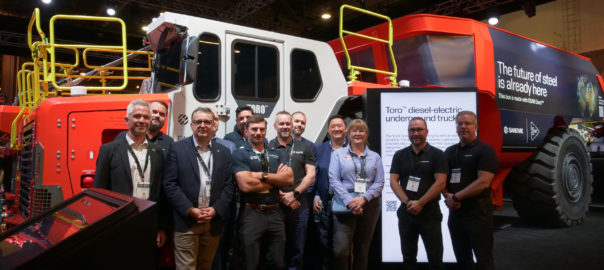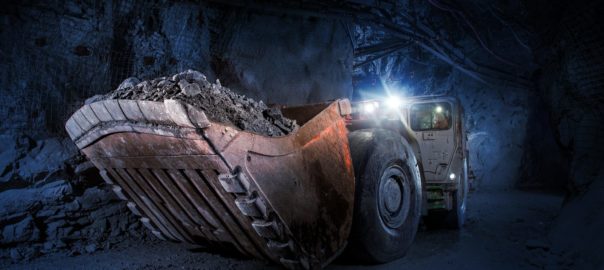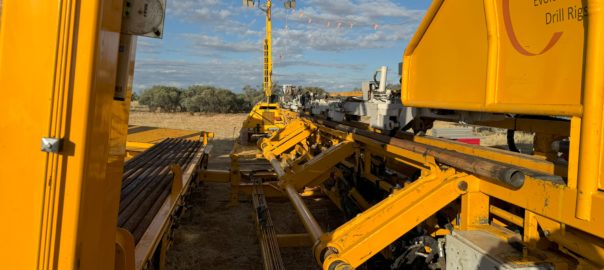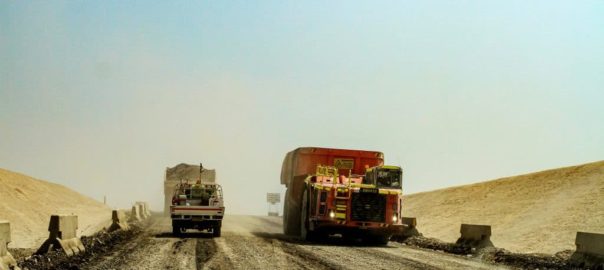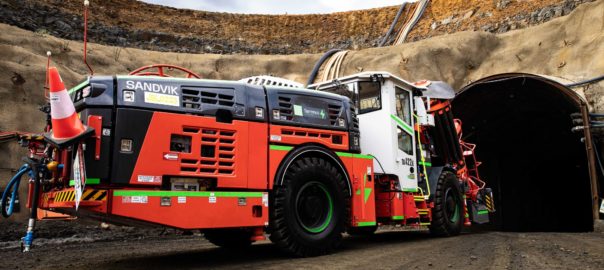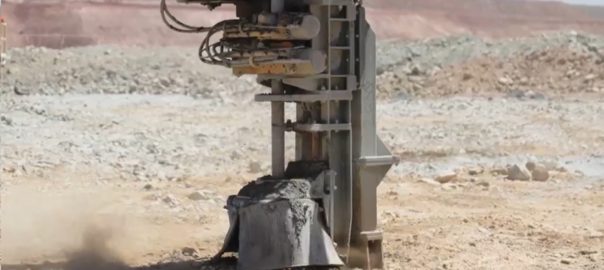“A green mining industry is not science fiction”, industrial technology giant ABB said earlier this year, pointing to the role it’s been playing in electrifying and automating energy-intensive mining processes for more than a century. Today’s technology presents even more actionable net zero emission pathways, according to ABB Process Industries Division President, Joachim Braun.
Speaking with Mining Beacon Editor, Richard Roberts, ahead of this year’s International Mining and Resources Conference and Expo (IMARC), in Sydney, Australia, Braun says a new ABB mining survey and report highlights a high level of industry planning to achieve significant net-zero transformation over the next five years.
The report will be a focus of an exclusive executive roundtable at IMARC, where industry leaders will converge to discuss strategies for achieving net zero emissions by 2030.
Richard Roberts: Next year is your 30th with ABB? Congratulations on your career so far.
Joachim Braun: Thank you. It’s been an incredible journey with ABB and the rapid pace of change in our industries is especially exciting.
Richard Roberts: It seems like technology has been over the past decade, or is about to be, transformative for engineering, manufacturing and other companies and industries. I read in the latest ABB Review how the company’s eMine simulation tools are enabling advanced mine fleet and power/renewable power integration simulation and modelling. How would you characterise the way in which these tools are changing the way you interact with customers, and how quickly has this happened?
Joachim Braun: Technology has been transformative, particularly in mining, and the eMine Simulation Solution is a great example. It allows customers to simulate renewable energy integration, fleet operations and power systems, optimising efficiency before making investments.
This data-driven approach is a game-changer, enabling customers to model scenarios, mitigate risks and optimise operations. Today, ABB is seen as a strategic partner to the mining industry, providing not only technology but deep expertise to guide customers through their energy transition.
Richard Roberts: In terms of your partnerships with top-tier mining and metals clients, how deeply embedded are these solutions? How central are they to shaping current and future alliances?
Joachim Braun: Our mining systems and solutions are deeply embedded in our partnerships with customers and others in the industry. But it’s not just about technology, it’s about building strong relationships with mining companies, OEMs and technologists. Collaboration is key because it allows us to bring expertise together and ensure the solutions we develop are aligned with real-world challenges. Our partnerships, like those with Perenti and IGO, evolve based on market conditions and shared goals.
Richard Roberts: You have talked in various forums and media about how quickly mining/metals is evolving as a technology adopter, among the process industries you deal with. Off a low base, it must be said. Which technologies do you see as being the most impactful in the sector in the next five years, from a “double materiality” perspective? How impactful will they be?
Joachim Braun: Mining is at a pivotal point and technologies like electrification, automation and digitalisation will have the greatest impact.
For example, our Gearless Mill Drives (GMD) are key for scaling copper production, which is critical for the energy transition. Integrating clean energy and AI-driven optimisation will enable the industry to extract more while reducing environmental impact, focusing on both sustainability and efficiency.
While mining has been slower to adopt certain technologies we’re seeing a shift.
A report which ABB will soon release, based on insights from 412 experts, shows that 53% of mining professionals are planning significant transformation in the next five years.
This is a unique opportunity for mining to leapfrog older stages of digitalisation and implement the most advanced solutions available today. ABB plays a key role in helping companies lay the automation foundation needed for this transition.
Richard Roberts: Mining, generally, is having to build more infrastructure to access remote deposits. It is moving more material to access lower grade, deeper deposits. This is not the way minerals/metals will help reshape the world’s energy, transport and urban landscapes, particularly with demand for primary minerals and metals climbing. Using more information, as others have said, can enable you to use less of other inputs…“More bits and bytes and not more kilos and litres”. How optimistic are you that we get to that world soon enough? Why?
Joachim Braun: As surface deposits deplete and ore grades decline, mining is increasingly moving deeper underground and processing more material for the same yield. This requires smarter solutions. Mine hoists, like those we’ve installed at BHP, are critical for accessing these deeper deposits sustainably. They provide an automated, electrified alternative to truck haulage, which is inefficient at great depths.
For example, at BHP, our hoist increased production from 4.5 Mt to 6.5 Mt annually while lowering emissions. This shows how automation and electrification can optimise operations and reduce environmental impact.
I’m optimistic that we can achieve the energy transition in time, but it requires collective action and the right approach.
This isn’t the first energy transition, but it’s one we must get right. We already have many of the technologies needed, though they are only now reaching the scale and capacity required for the future.
Take electrification. ABB electrified the first mine hoist in the 1890s, but clean energy wasn’t feasible back then. Today we’re seeing the potential of technologies like lithium-ion batteries which, despite their progress, are still in their infancy compared to more established industries.
Success depends on collaboration across the entire supply chain. Miners are leading the way but we need open partnerships, breaking down silos to drive real progress. Only by working together can we achieve our goals and create a sustainable future.
Richard Roberts: You’ve talked a lot about the need for, and power of, collaboration. ABB is working with mining and metals customers, and with mining OEMs/service companies such as FLSmidth, Perenti and Komatsu.
Joachim Braun: Electrification in mining, once thought impossible, is now a reality and a key part of the industry’s push towards sustainability.
Today, no globally-focused mining company can ignore electrification. It’s essential to meet 2030-2050 energy transition targets. ABB’s solutions, like the eMine Trolley System, have helped customers reduce diesel consumption by up to 90%, showing how quickly we can decarbonise operations.
Collaboration with partners like FLSmidth, Perenti and Komatsu has been vital in driving these innovations. While site operators focus on productivity and equipment availability, decarbonisation is becoming a shared goal, enabled by technology.
Richard Roberts: You said, with the recent Komatsu announcement, collaboration across the mining industry had “already been proven to enable real and faster progress and we look forward to driving what happens next”. What are the best examples, in your view, of where “real and faster progress” has occurred where we would not have otherwise seen such progress?
Joachim Braun: Electrification and automation have been game-changers in improving safety and efficiency, especially in remote and harsh mining environments.
A great example is the eMine Robot Automated Connection Device (ACD), developed with Boliden, BHP and Komatsu. This automated, high-power truck charging system eliminates the need for human intervention, maximising machinery uptime and boosting site productivity.
Another example is our automated robotic remote blasting loader, which just won gold at the Euromines Safety Awards 2024. Developed with Boliden, LKAB and explosive suppliers, this technology automates the dangerous process of charging blasting holes, improving safety by removing workers from hazardous environments.
These innovations wouldn’t have progressed as quickly without strong collaboration, proving the power of partnership in driving real progress.
Richard Roberts: What do you hope “happens next” by way of a “difference to the way mining companies operate their sites in the near future”?
Joachim Braun: In the near future I hope to see mining companies fully embrace the opportunities presented by electrification, automation and digitalisation.
Over the past two years working with eMine we’ve gained invaluable insights from collaborating with customers and partners. We now have a clearer understanding of where the mining industry stands in terms of technology adoption and are better equipped to tailor our solutions.
Looking ahead, automation and digitalisation will be crucial for addressing challenges like sustainability and workforce evolution. These technologies will not only optimise operations but also make mining a more attractive and inclusive industry. The focus is now on implementing these changes quickly and effectively.
With the right approach we can drive positive change across the sector.
International Mining is a media sponsor of IMARC, taking place in Sydney, Australia, from October 29-31







